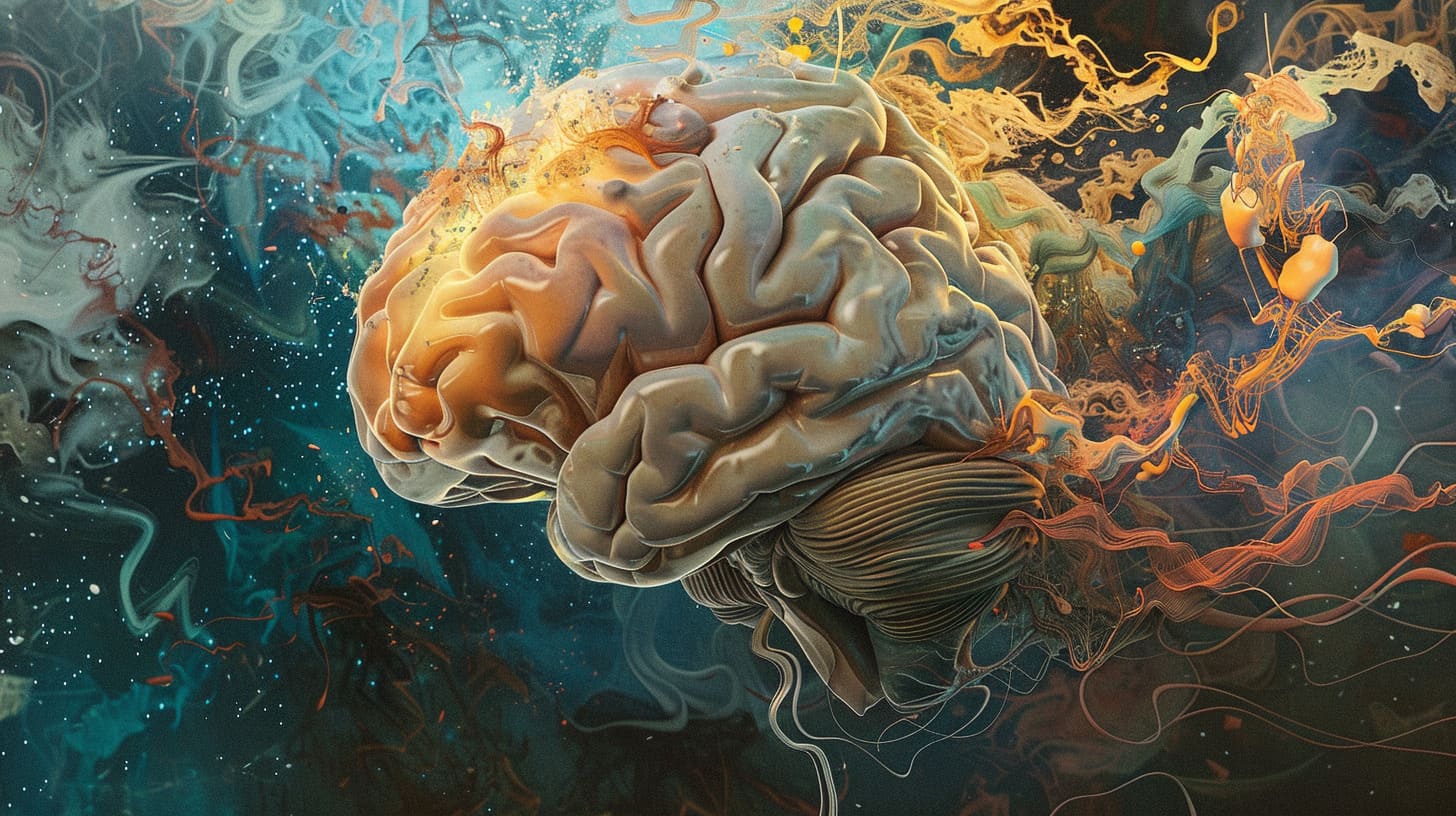What is Lucid Dreaming?
Lucid dreaming is a fascinating state where you’re fully aware that you’re dreaming. Imagine navigating a dream with the awareness of your waking life, able to control events with a thought. This unique type of dream sets itself apart from the usual, often chaotic narratives our minds weave at night. According to the International Association for the Study of Dreams (IASD), lucid dreaming is recognized as a dream in which you know you’re dreaming and might even steer the dream’s direction and events.
The intrigue surrounding lucid dreaming isn’t just a recent trend. Both scientists and the general public have shown growing interest, exploring its potential for enhancing creativity, solving problems, and even therapeutic healing. Scientifically, the quest has been to decode the brain activity that lights up during lucid dreams, leading to the development of several techniques aimed at triggering such dreams. Reality Checking, Mnemonic Induction of Lucid Dreams (MILD), and Wake-Back-To-Bed (WBTB) are just a few methods that have emerged from this exploration.
The reach of lucid dreaming extends beyond the lab, capturing the imagination of popular culture. Its concepts are now familiar scenes in movies, TV shows, and even video games, reflecting its widespread appeal and curiosity. This blend of scientific intrigue and cultural fascination underscores the captivating nature of lucid dreaming.
Interestingly, lucid dreaming is relatively common, with studies revealing that over half of us will experience at least one lucid dream in our lives. This frequency tends to skew towards younger adults and males, though factors like dream recall, openness to experience, and certain cognitive abilities can influence one’s propensity for lucid dreams. The ongoing research into lucid dreaming not only aims to unravel the mysteries of our nocturnal adventures but also seeks to enhance our understanding and ability to navigate them consciously.
The Science Behind Lucid Dreaming

Recent studies between 2021 and 2023 have propelled our understanding of lucid dreaming into new territories, especially concerning the brain’s activity during these vivid dreaming states. A fascinating finding from a 2021 study in “Science Advances” revealed that when you’re aware you’re dreaming, certain areas of your brain light up like a Christmas tree. Specifically, the parietal and frontal regions—key players in self-awareness and attention—show increased activity. This discovery suggests that lucid dreaming is not just any dream state but a unique form of consciousness.
Another piece of the puzzle was provided by 2022 research published in “Sleep,” highlighting
that lucid dreams are marked by high-frequency brain waves. These are surprisingly similar to the patterns seen when you’re fully awake and engaged in a cognitive task. It appears that your brain is on high alert, processing information at a level that rivals your waking thought processes.
Adding a biochemical perspective, a 2023 “Nature Communications” study went a step further to examine the neurochemistry of lucid dreamers, uncovering elevated levels of acetylcholine. This neurotransmitter is crucial for memory and attention, reinforcing the idea that during lucid dreaming, your brain is in a heightened state of cognitive processing.
Technological advancements in neuroimaging, like high-density EEG and functional near-infrared spectroscopy (fNIRS), have been instrumental in these discoveries. They’ve allowed scientists to paint a more detailed picture of the brain’s activity during lucid dreaming, confirming increased activation in the prefrontal cortex, a hub for cognitive functions.
Emerging theories from cognitive science offer intriguing explanations for how lucid dreaming might occur. The dual-process theory suggests a tango between the brain’s automatic, reflexive system and the conscious, controlled system, where lucidity emerges when consciousness takes the lead. Another theory emphasizes the importance of reality testing—a skill that, when honed during waking hours, can spill over into the dream world, paving the way for lucid dreams. Additionally, neuroplasticity, the brain’s ability to form new connections, is seen as a key factor in developing the ability to become aware within dreams.
Key Insights:
- Increased activity in brain regions associated with self-awareness during lucid dreaming.
- High-frequency brain waves present in lucid state, akin to wakefulness.
- Elevated acetylcholine levels, hinting at intense cognitive processing.
- Advanced imaging techniques shedding light on specific brain activity patterns.
- Theories focusing on cognitive processes and neuroplasticity offer explanations for the phenomenon.
These breakthroughs not only deepen our grasp of lucid dreaming but also hint at its potential as a tool for exploring the vast landscapes of human consciousness and cognitive capabilities.
Reality Checking – A Gateway to Lucidity

Reality checking serves as your personal inception button into the world of lucid dreaming. It’s a simple, yet powerful technique that trains your brain to distinguish between waking and dreaming states, acting as a critical step towards achieving lucidity. By regularly questioning your reality both during the day and right before you sleep, you cultivate a heightened sense of awareness that can follow you into the dream world.
Effective Reality Checking Techniques:
- Reality Tests: Incorporate checks like reading a piece of text twice, inspecting your hands for abnormalities, or trying to push a finger through your palm. If the text changes, your hands look odd, or your finger passes through, you might just be dreaming.
- Mnemonic Devices: Link the act of reality checking with everyday objects or actions. Each time you see a certain object or perform a specific action, remind yourself to check if you’re dreaming.
- Wake-Initiated Lucid Dreaming (WILD): Stay conscious as you fall asleep. It’s a challenging but rewarding method that can lead directly into a lucid dream.
- Wake Back to Bed (WBTB): Wake up after five hours of sleep, stay awake briefly, then go back to sleep with the intention of becoming lucid.
- Dream Journaling: Keeping a record of your dreams increases your dream awareness, making it easier to realize when you’re in one.
Why Reality Checking Works:
- Increased Self-Awareness: Regular checks raise your level of mindfulness, translating into a more questioning attitude in dreams.
- Neuroplasticity: This practice strengthens brain connections associated with self-awareness and perception, paving the way for dream recognition.
- Cognitive Training: Like any skill, practice makes perfect. Reality checking sharpens focus and memory, crucial tools for lucid dreamers.
- Mental Preparation: Embedding the habit of questioning reality primes your mind for recognizing the dream state, increasing your chances of going lucid.
The understanding of reality checking has evolved, thanks to advancements in lucid dreaming science. It’s not just about asking “Am I dreaming?” anymore. Each technique, from the tactile to the mental, serves to bridge the gap between conscious and unconscious realms, making lucid dreaming more accessible. Remember, the goal is to cultivate a curious, attentive mind that can effortlessly traverse the boundaries of your dream world.
Mnemonic Induction of Lucid Dreams (MILD) Technique

The Mnemonic Induction of Lucid Dreams (MILD) technique is a game-changer in unlocking the world of lucid dreaming. It’s a method that combines intention, visualization, and mindfulness to trigger self-awareness in dreams. Let’s break down how you can make the MILD technique work for you, backed by the latest findings in dream research.
First up, integrating MILD with other techniques, like Reality Checking and Wake-Back-To-Bed (WBTB), significantly boosts your chances of experiencing lucid dreams. Imagine pairing MILD with WBTB like adding a turbocharger to your car; it just makes everything more powerful. This combo has been shown to increase the frequency of lucid dreams, making it a top strategy for dream explorers.
Technology also plays a cool role in enhancing MILD. Using dream journals and dream recall apps not only helps in keeping a record of your dream adventures but also improves your ability to recall dreams. This is crucial because the more you remember, the more material you have to work with when practicing MILD.
Age, gender, and cultural background bring interesting twists to the effectiveness of MILD. Younger adults might find it slightly easier to navigate the lucid dreaming landscape, but truly, lucid dreams do not discriminate. Your personal experience with MILD can also be enriched by embracing your unique background and perspectives on dreaming.
For those just starting with MILD, remember, consistency is your best friend. Practice makes perfect. And if you hit a bump, tweaking the technique to better fit your style can make all the difference. Don’t shy away from seeking support from the lucid dreaming community or even a coach. Lastly, ensure your sleeping environment is conducive to dreaming; it’s all about setting the stage for success.
- Technique Combo: MILD + WBTB
- Tech Aids: Dream Journals and Apps
- Demographics: Age, Gender, Culture
- Beginner Strategies: Consistency, Patience, Modification, Support, Environment
By following these steps and embracing the science behind MILD, you’re well on your way to mastering lucid dreaming. Remember, the journey to dream control is personal and unique to each dreamer. Explore, experiment, and enjoy the ride.
Wake-Back-To-Bed (WBTB) Method
The Wake-Back-To-Bed (WBTB) method is a powerhouse technique for those keen on diving into lucid dreaming. It’s pretty straightforward: you sleep, wake up briefly, then go back to sleep with the intention of entering a lucid dream. This method isn’t just a hit among dream enthusiasts; it’s backed by science. Studies have shown that WBTB can significantly increase both the frequency and clarity of lucid dreams. Imagine doubling or even tripling your chances of experiencing a dream where you’re fully in control. That’s the potential power of WBTB.
Here’s how it works: You complete one sleep cycle, wake up for a bit, and then head back to dreamland. This brief period of wakefulness is the golden window for planting the seed of lucidity. It’s like hitting the reset button on your dream state, only this time, you’re in the driver’s seat.
Incorporating modern tech can make the WBTB even more effective. Using sleep tracking apps to pinpoint the perfect moment to wake up, or meditation apps during your awake period, can significantly boost your success rate. It’s a blend of age-old lucid dreaming techniques and cutting-edge technology, tailored for today’s dream explorer.
But remember, while tech can help, the core of WBTB success lies in persistence, mindfulness in dreaming, and good sleep hygiene. Pairing it with techniques like MILD or consistent dream journaling can create a lucid dreaming cocktail that’s hard to beat. So, if you’re looking to explore the vastness of your own subconscious with a good chance of lucidity, WBTB might just be your ticket to dreamland.
Innovative Approaches to Lucid Dreaming
The realm of lucid dreaming is fascinating, with the latest innovations pushing the boundaries of what’s possible inside our dreams. Technologies like neurofeedback and virtual reality (VR) are game-changers, offering new methods to not only enter the lucid state but control it with a finesse that was previously unimaginable.
Neurofeedback has become a cornerstone in this advanced training, with Brain-Computer Interfaces (BCIs) leading the charge. BCIs forge a direct link between your brain and devices, providing real-time feedback and enhancing your ability to enter lucid dreams at will. Imagine adjusting your dream settings as easily as you might scroll through a smartphone. High-density EEG systems and neurostimulation techniques, like TMS and tDCS, further fine-tune your brain’s dreaming capabilities. These tools map and stimulate your brain activity, guiding you into lucidity. Meanwhile, machine learning algorithms personalize your experience, analyzing your brain waves to deliver feedback that’s tailored just for you.

Virtual reality takes a slightly different but equally thrilling approach. By simulating realistic dream environments, VR plunges you into immersive worlds where the boundaries between the virtual and the dream state blur. This technology not only boosts your chances of becoming lucid but enriches the dream’s quality. Through sensory stimulation and programmed reality checks, VR enhances dream awareness and recall, making every dream a potential adventure in lucidity.
When neurofeedback meets VR, the results are spectacular. Neurofeedback-enhanced VR trains your brain into lucidity, then catapults you into vivid, interactive dreamscapes. Alternatively, VR-guided neurofeedback uses the immersive world of VR to provide feedback on your brain’s sleeping patterns, teaching you to navigate the dream world with intention.
Hybrid systems combine the best of both, promising a future where lucid dream training is not only more effective but accessible. While neurofeedback offers a deep dive into dream manipulation, its complexity and cost might not suit everyone. VR, on the other hand, stands out for its growing affordability and ease of use. Together, they open doors to a world where mastering lucid dreams could be as straightforward as playing a video game.
In essence, these innovative approaches are making lucid dreaming more attainable, transforming it from an elusive night-time phenomenon into a navigable and enriching experience. Whether you’re a seasoned lucid dreamer or just curious about controlling your dreams, the future of dream exploration is brighter and more accessible than ever before.
Dream Journaling: Your Path to Dream Awareness
Keeping a dream journal is a cornerstone technique in the world of lucid dreaming. Studies have highlighted its effectiveness, showing a significant boost in the frequency and vividness of lucid dreams for individuals who diligently record their dreams. By jotting down your dreams, you’re essentially training your brain to remember more about your dreams, which is a critical step towards achieving lucidity.
Technological advancements have made dream journaling more accessible and efficient than ever. With a variety of apps at your disposal, recording your dreams right when you wake up has never been easier. These digital tools not only help in capturing your dreams but also offer dream analysis and reminders, enhancing your journey towards dream awareness.

To maximize the benefits of your dream journal, incorporate techniques like Mnemonic Induction of Lucid Dreams (MILD), where you prime your mind to remember to become aware that you’re dreaming. Reality checking throughout the day can also train your brain to spot dream signs, increasing your chances of lucidity. The Wake-Back-To-Bed (WBTB) method, involving waking up for a short period before returning to sleep, is particularly effective when combined with dream journaling, as it creates an ideal state for lucid dreams to occur.
Remember, consistency in recording your dreams is key to developing deeper dream awareness and enhancing your ability to control your dreams. By making dream journaling a regular part of your routine, you ready your mind to embark on the fascinating journey of lucid dreaming.
Advanced Lucid Dreaming: Dream Control and Stabilization
Achieving and maintaining lucidity in dreams is like holding onto a slippery fish – it requires skill, patience, and the right techniques. Thanks to recent studies in 2023, the landscape of lucid dreaming has expanded with innovative methods that enhance dream control and stabilization. Let’s dive into the most effective strategies that can turn you into a proficient lucid dreamer.
Reality Testing remains a cornerstone in the foundation of lucid dreaming. Its effectiveness is boosted by modern tools such as smartphone apps, which provide cues to question your reality both day and night, sharpening your awareness. When paired with Mnemonic Induction of Lucid Dreams (MILD) and Wake-Back-To-Bed (WBTB) methods, your chances of entering and staying in a lucid dream skyrocket.
Wake Initiated Lucid Dreams (WILD) transport you directly from wakefulness into a dream state, blurring the lines between reality and dreams. Techniques like focused breathing, meditation, and visualization play crucial roles in this method. Dream Journaling has evolved too; digital platforms have made tracking your dreams more accessible, encouraging a deeper understanding and stronger dream recall.
In the realm of technology, Neurofeedback and Virtual Reality (VR) are breaking new ground. Neurofeedback trains your brain for better dream control, while VR immerses you in a realistic dream world, enhancing the vividness and stability of your lucid dreams. Together, they’re shaping a future where mastering lucid dreaming is within anyone’s reach.
To maintain lucidity in longer dream sequences, experienced lucid dreamers employ a mix of reality checks, mental and physical techniques, and dream manipulation. This involves changing dream scenery, interacting with dream characters, and even exploring new worlds—all of which require a keen sense of mindfulness and control.
Emerging technologies like Brain-Computer Interfaces (BCIs) and sleep tracking devices are on the frontline, offering novel ways to enter and stay in lucid dreams by harnessing the power of your brainwaves and optimizing your sleep patterns.
In conclusion, blending traditional techniques with the latest advancements in neuroscience and technology provides a powerful toolkit for anyone looking to master dream control and stabilization. Whether you’re a seasoned lucid dreamer or just starting, the journey towards full mastery of your dream world is more accessible and exciting than ever before.
Conclusion
Mastering lucid dreaming techniques opens up a fascinating world where you can explore the depths of your mind and unlock your creative potential. From the foundational practices of reality checking, dream journaling, and the Mnemonic Induction of Lucid Dreams (MILD) technique recommended for beginners, to the more advanced methods like Wake-Back-To-Bed (WBTB) and Wake-Initiated Lucid Dreams (WILD) for experienced dreamers, there’s a pathway for everyone to achieve dream awareness and control.
Recent scientific advancements, such as neurofeedback and brain stimulation, have enhanced these techniques, making lucid dreaming more accessible. Furthermore, virtual reality is emerging as a promising tool, offering immersive experiences that can trigger lucidity. The lucid dreaming community continues to share insights and successes, further enriching our understanding and application of these techniques.
Whether you’re using lucid dreaming for personal development, creative exploration, or psychological well-being, the benefits are profound. Studies have shown its effectiveness in overcoming phobias, boosting creativity, and enhancing emotional intelligence. As you embark on or continue your lucid dreaming journey, embrace the process with patience and persistence. The world of lucid dreaming is vast and full of potential – your mind is the only limit.

Leave a Reply